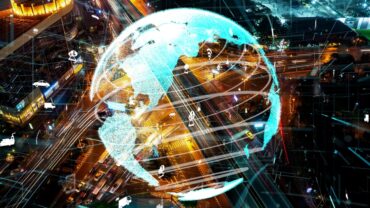
Adaptive cities allow municipalities to balance political, economic, social, technological, and environmental conditions, continuously analyzing and acting on them.
Cities are incredibly dynamic. And while smart cities are being used and considered globally to help improve operations, the delivery of services, and the quality of life, some believe more is needed. Specifically, smart city planners and designers must begin thinking along the lines of adaptive cities.
Let’s put the scope of the issues into perspective. Many cities are already facing problems dealing with traffic, waste management, water, sustainability issues, and more. And the situation will only get worse in the years to come. Currently, 55% of the world’s population lives in urban areas, with 68% projected to live in urban areas by 2050. In the United States, the number is already at 83% and is projected to reach 89% by 2050.

Smart cities have long been eyed as a way to deal with many of the challenges municipalities face on a day-to-day basis. Such cities collect vast amounts of data, which is collected and analyzed via edge devices. But according to the World Economic Forum, “the city of the future needs to go one critical step further. It needs to become an adaptive city able to respond dynamically to continuous change and disruption.”
It further noted that developments and events in recent years show just how disruptive things can be. On the new technologies front, the forum points to things like 3D printing, artificial intelligence, autonomous cars, digital twins, and more. On the disruptive side, there has been the pandemic, extreme weather events, and geopolitical conflicts.
See also: Edge Computing and 5G Digital Cities Resources
Enter adaptive cities
The forum noted that “the smart city concept worked well for steady-state conditions, but in a world of continuous disruption, a key requirement for the city is to be able to respond to change and do so with intrinsic agility across both digital and physical aspects of its operating model. Agility in the digital ecosystem is nothing if the city remains brittle in its physical infrastructure.”
That’s where adaptive cities come in. They must balance all the political, economic, social, technological, legal, and environmental conditions, continuously analyzing and acting on them.
One area that highlights the nuanced difference between a smart city and an adaptive city is parking. There are many applications of smart parking that share empty spot availability gathered via distributed sensors with drivers seeking a place to park. Such apps aim to reduce congestion caused by drivers endlessly circling the block to find a parking spot.
In some cases, the municipality has taken the approach to a higher level by combining more than one technology. One example was a pilot program at the Stuttgart airport that combined an intelligent infrastructure, a digital parking garage operations platform, and autonomous vehicles into an automated valet parking service.
These programs and initiatives are innovative. But the World Economic Forum points to more dynamic systems that would deliver greater benefits that might be implemented in the future. One example is a dynamic curb management solution that enables city planners to smoothen the flow of traffic and deliveries at the curbside. Such a solution could turn two-hour parking spots into three-minute loading zones at times when deliveries are commonly made. In fact, several U.S. cities are working on versions of this where they offer dynamically-priced delivery zones, with rates and availability based on time of day and other factors. Such a service could be proactively managed on a minute-by-minute basis.
See also: Smart Cities: A Look to the Future Should Guide the Way
In general, a dynamic curb management solution is quite a different beast than a smart app that helps people park. The latter saves residents time, reduces traffic congestion, and most likely helps the city reduce the carbon emissions that would have come from cars circling blocks. The former does similar things but also helps delivery services get goods into the hands of merchants, maximizes the use of precious real estate (curbside parking), and brings additional revenue to the city.








